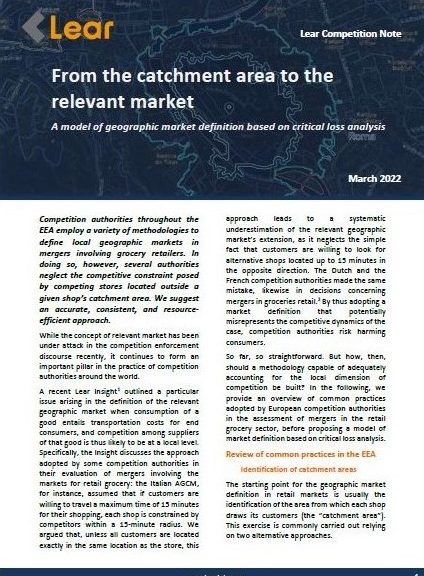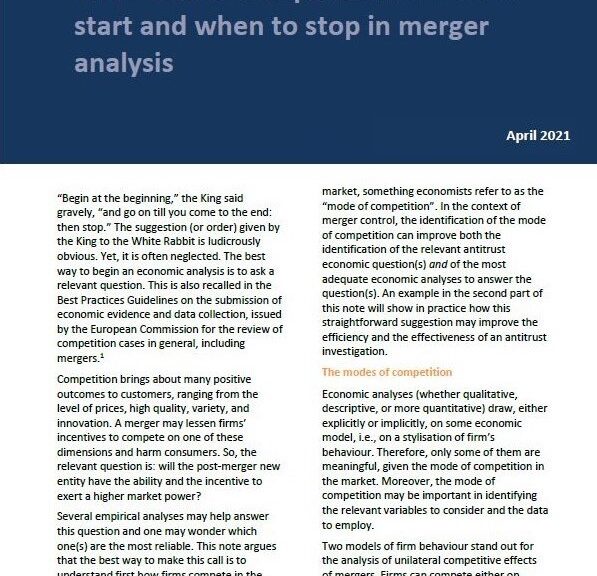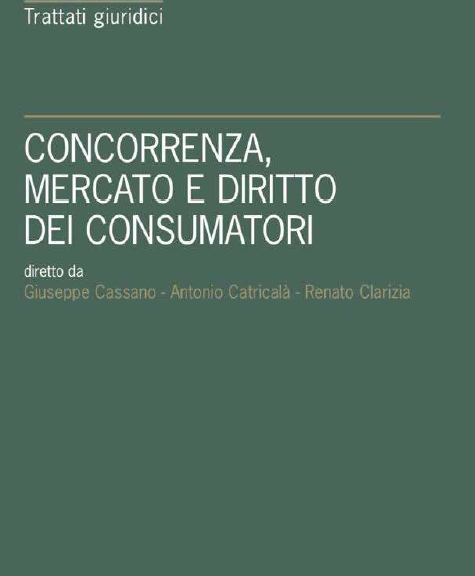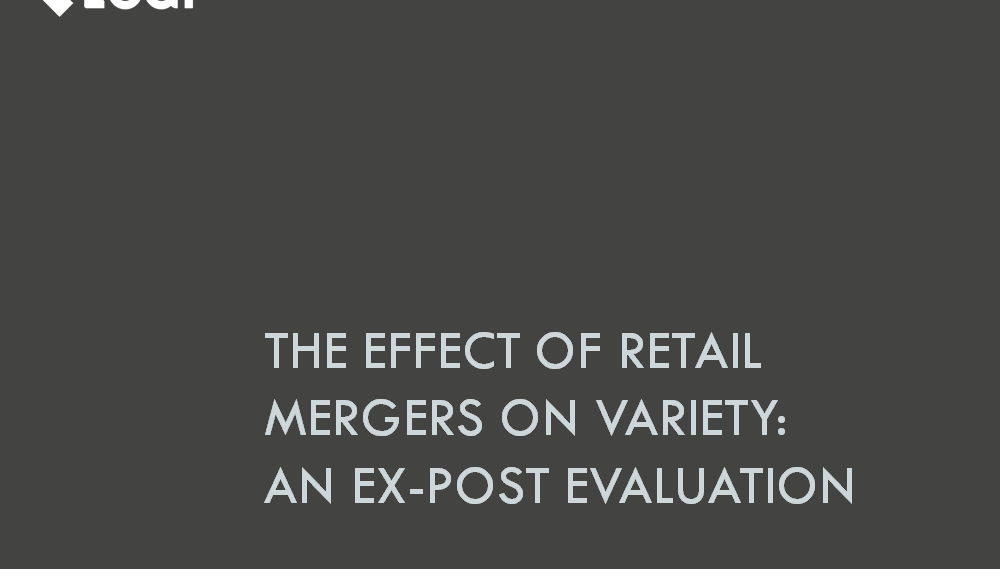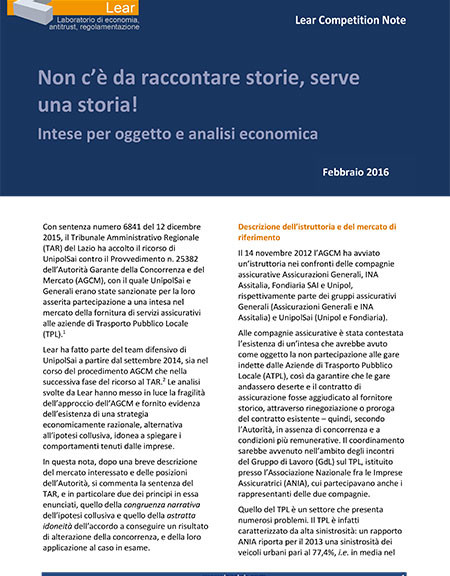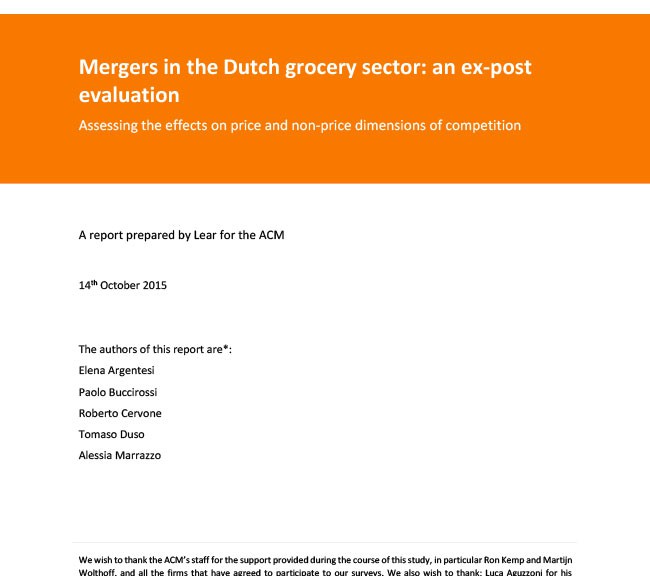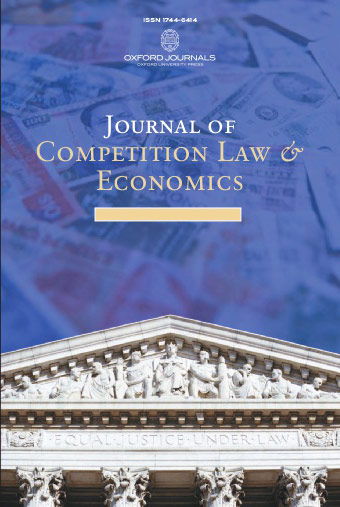Competition authorities throughout the EEA employ a variety of methodologies to define local geographic markets in mergers involving grocery retailers. In doing so, however, several authorities neglect the competitive constraint posed by competing stores located outside a given shop’s catchment area. We suggest an accurate, consistent, and resource-efficient approach.
Archives
The virtue of an imperfect competition law
Imperfect competition is not necessarily a curse. It evokes an environment in which firms compete on multiple dimensions to satisfy heterogeneous consumer preferences. This can create a tension between conflicting social objectives. Inevitably, we must decide which of these objectives should guide competition law. In making this decision, we must accept that it is impossible to reconcile these objectives or to classify them in an order that applies to all, at all times. Thus, the choice of which objective to pursue is a moral choice. However, we can still give competition law a specific objective, since other policies may pursue other objectives. The objective of competition law should be chosen by considering the main features of competition law rules. These rules are stable, technical and their violation carries severe penalties.
These themes are discussed in this article published by Competition Policy International in the October 2021 issue of the Antitrust Chronicle. The article concludes that the value that best fits these characteristics is a narrow notion of total welfare.
The mode of competition: where to start and when you stop in merger analysis
“The best way to begin an economic analysis is to ask a relevant question. In a merger analysis the relevant question is: will the post-merger new entity have the ability and the incentive to exert a higher market power? But which analyses are best suited to answer these questions? This note argues that the best way to make this call is to understand first how firms compete in the market, something economists refer to as the “mode of competition”. In the context of merger control, the identification of the mode of competition can improve both the identification of the relevant antitrust economic question(s) and of the most adequate economic analyses to answer the question(s).”
Leniency and Damages: Where Is the Conflict?
Damage actions may reduce leniency programs’ attractiveness for cartel participants if their cooperation with the competition authority increases the chance that the cartel’s victims will sue them. This apparent conflict between public and private antitrust enforcement led to calls for a legal compromise. We show that the conflict is due to the legislation, and a compromise is not required: limiting the victims’ ability to recover their losses is not necessary to preserve the effectiveness of leniency programs and may be counterproductive. We show that damage actions will improve their effectiveness if the civil liability of the immunity recipient is minimized and full access to all evidence collected by the competition authority is granted to claimants. Our results help compare the EU and US damage systems and directly question the 2014 EU directive that tries to protect leniency programs’ effectiveness by restricting access to leniency statements in subsequent damage actions.
Concorrenza, mercato e diritto dei consumatori
The volume aims at providing a comprehensive view on competition law and consumer protection, also in light of the most recent case law. The volume also looks at the interaction between law and economics when it comes to competition matters. Paolo and Salvatore have written two chapters, one on the role of economics in merger control; and the other on the broader theme of the role of economics, and economists, within antitrust proceedings.
Economic impact of competition policy enforcement on the functioning of telecoms markets in the EU
The report empirically investigates the causal effects of three decisions adopted by the European Commission on the performance of telecoms markets, namely the T-Mobile/Orange merger in the UK mobile markets, a state aid decision in the German fixed broadband market and an abuse of dominant position by Telekomunikacja Polska in the Polish fixed market. The report also provides a descriptive analysis on the evolution of competition policy enforcement in the telecoms markets and the concurrent trends in markets’ performance.
The effect of retail mergers on variety: An ex-post evaluation
This presentation includes a qualitative and a quantitative analysis and examines the effect of the mergers on different dimensions of competition: price, product variety, provision of qualitative and ancillary services. Continue reading The effect of retail mergers on variety: An ex-post evaluation
Non c’è da raccontare storie, serve una storia! Intese per oggetto e analisi economica
La LCN commenta la recente sentenza con cui il Tribunale Amministrativo Regionale del Lazio ha accolto il ricorso di UnipolSai contro il Provvedimento n. 25382 dell’Autorità Garante della Concorrenza e del Mercato.
La LCN si focalizza su due dei principi enunciati nella sentenza, quello della congruenza narrativa dell’ipotesi collusiva e quello della astratta idoneità dell’accordo a conseguire un risultato di alterazione della concorrenza.
Merger in the Dutch grocery sector: an ex-post evaluation
This study evaluates the appropriateness of some merger decisions undertaken by the Autoriteit Consument & Markt (ACM) in the Dutch grocery shopping sector. We analyze three related merger decisions published between 2009 and 2012 and involving major supermarket chains.
We conduct both a qualitative and a quantitative analysis and examine the effect of the mergers on different dimension of competition: price, product variety, provision of qualitative and ancillary services.
We estimated the effect on prices under both the assumption of local and national pricing. The results of our quantitative and qualitative analyses suggest that the three mergers did not impact prices. The effect on product variety, however, are less reassuring. According to our analyses, the last of the three mergers negatively impacted the depth of the product assortment offered by the merging parties and consumers had less choice.
We corroborate these findings by also econometrically testing if the issuance of the divestitures alleviated the negative effects on variety. The results obtained suggest that the divestiture only partially outweighed the reduction in variety caused by the mergers and that additional divestitures could have been needed.
Vertical restraints on e-commerce and selective distribution
This paper discusses whether, when manufacturers choose to adopt a selective distribution system, vertical restraints imposed on electronic commerce (e-commerce) may work in the interest of consumers or have anticompetitive consequences that require an antitrust intervention. The paper presents the basic economic concepts that apply to vertical restraints, and identifies the efficiency reasons and the anticompetitive effects that may motivate their adoption. Then, the relevant economic literature is surveyed in order to understand how e-commerce influences retail competition, taking into account its impact on search costs, distribution costs, and information asymmetry. The paper examines the legal treatment of vertical restraints on e-commerce in the case of selective distribution; it summarizes the position expressed by the European Commission in the Block Exemption Regulation and the accompanying guidelines, and then discusses some cases decided by National Competition Authorities, National Courts, and the European Courts. From this overview emerges the risk that the antitrust analysis of vertical restraints on e-commerce in selective distribution systems may be guided by presumptions that do not have solid economic grounds. The paper argues that it is unwise to adopt a formal approach for the legal assessment of these vertical restraints and calls for a more economic effect-based approach.

